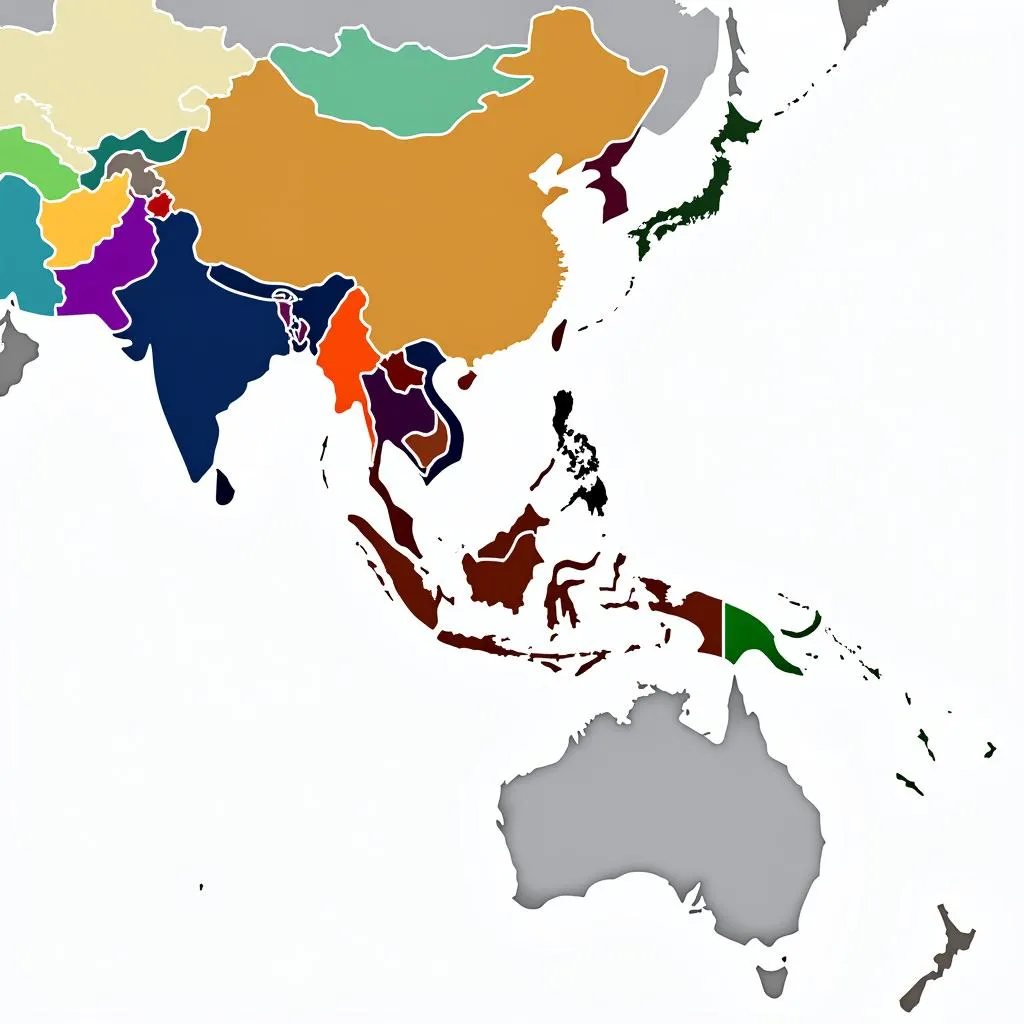The Association of Southeast Asian Nations (ASEAN) is a regional organization comprised of ten Southeast Asian countries: Brunei, Cambodia, Indonesia, Laos, Malaysia, Myanmar, the Philippines, Singapore, Thailand, and Vietnam. Established on August 8, 1967, in Bangkok, Thailand, ASEAN aims to accelerate economic growth, social progress, and cultural development in the region. This article delves into the primary motivations behind ASEAN’s creation, exploring the key factors that propelled Southeast Asian nations towards unity and regional cooperation.
The Post-Colonial Landscape: A Drive for Stability and Prosperity
The formation of ASEAN emerged from the post-colonial landscape of Southeast Asia. Following the independence of many nations in the region, a sense of vulnerability and instability prevailed. The region faced various internal and external challenges, including political unrest, economic disparities, and threats from external powers. ASEAN was envisioned as a platform to overcome these challenges and foster a sense of regional stability.
“The founding fathers of ASEAN recognized the need for collective security and shared prosperity in a turbulent post-colonial world,” explains Dr. Nguyen Van Thi, a prominent Southeast Asian historian.
Economic Integration and Shared Growth
ASEAN’s founding members understood the potential of economic cooperation for regional prosperity. The pursuit of shared economic growth was a driving force behind ASEAN’s creation. The agreement aimed to create a free trade zone, reduce tariffs, and facilitate the flow of goods, services, and investments between member states.
“The economic benefits of regional integration were a key driver for ASEAN’s formation,” states Ms. Suriani Ahmad, a leading ASEAN economist. “The vision was to leverage the combined economic power of Southeast Asia to achieve sustainable development and prosperity for all member countries.”
Cultural Exchange and Shared Identity
Beyond economic and political goals, ASEAN’s founders recognized the importance of cultural exchange and the cultivation of a shared Southeast Asian identity. The organization aimed to promote understanding, tolerance, and cooperation amongst diverse cultures and ethnicities within the region. ASEAN initiatives, like the Southeast Asian Games, foster cultural exchange and unity.
“ASEAN provides a space for celebrating the rich cultural diversity of Southeast Asia while simultaneously promoting a sense of shared identity,” asserts Mr. Chalermchai Boonma, a renowned Southeast Asian cultural scholar.
Fostering Regional Stability and Security
ASEAN’s founders recognized the importance of regional stability and security. The organization aims to address issues of cross-border crime, terrorism, and natural disasters through joint efforts. ASEAN also serves as a platform for resolving regional disputes and promoting dialogue between member states.
“Regional security is crucial for ASEAN’s long-term success,” states Dr. Amnuay Paibulratana, a security expert and ASEAN scholar. “ASEAN’s commitment to peaceful resolution of conflicts and collective action against threats to regional security is central to its mission.”
Conclusion: ASEAN’s Enduring Relevance
The establishment of ASEAN was a significant moment in Southeast Asian history. Driven by a desire for stability, economic growth, cultural exchange, and regional security, the organization has played a crucial role in shaping the destiny of the region. ASEAN has become a symbol of unity, cooperation, and progress for Southeast Asia. Its continued relevance lies in its commitment to address emerging challenges and foster a more prosperous, peaceful, and integrated Southeast Asia.
FAQ
1. What are the main goals of ASEAN?
ASEAN aims to accelerate economic growth, social progress, and cultural development in the region. The organization also strives to foster regional stability, security, and cooperation.
2. When was ASEAN established?
ASEAN was established on August 8, 1967, in Bangkok, Thailand.
3. What are some of the key achievements of ASEAN?
ASEAN has achieved significant progress in promoting economic integration, regional security, and cultural exchange. The organization has established free trade agreements, reduced tariffs, and facilitated the flow of goods and investments. ASEAN has also played a vital role in resolving regional disputes and promoting dialogue.
4. What are some of the challenges facing ASEAN?
ASEAN faces challenges like economic disparities, political instability, and rising nationalism. The organization also faces the challenge of effectively responding to emerging threats like climate change, cybercrime, and terrorism.
5. How can I get involved in ASEAN?
You can get involved in ASEAN by supporting its initiatives, participating in cultural exchange programs, and advocating for regional cooperation. You can also contribute to ASEAN’s success by promoting understanding and tolerance between Southeast Asian nations.
6. What are some of the most important ASEAN institutions?
Key ASEAN institutions include the ASEAN Secretariat, the ASEAN Regional Forum (ARF), and the ASEAN Economic Community (AEC).
7. What are some of the ongoing initiatives of ASEAN?
ASEAN is actively pursuing initiatives like the Master Plan on ASEAN Connectivity (MPAC), the ASEAN Smart Cities Network (ASCN), and the ASEAN Economic Community Blueprint 2025.
 Map of ASEAN member countries
Map of ASEAN member countries
The establishment of ASEAN was a watershed moment in Southeast Asian history. By understanding the reasons behind its formation, we gain deeper insights into the complexities of regional integration and its enduring significance for the future of Southeast Asia.


